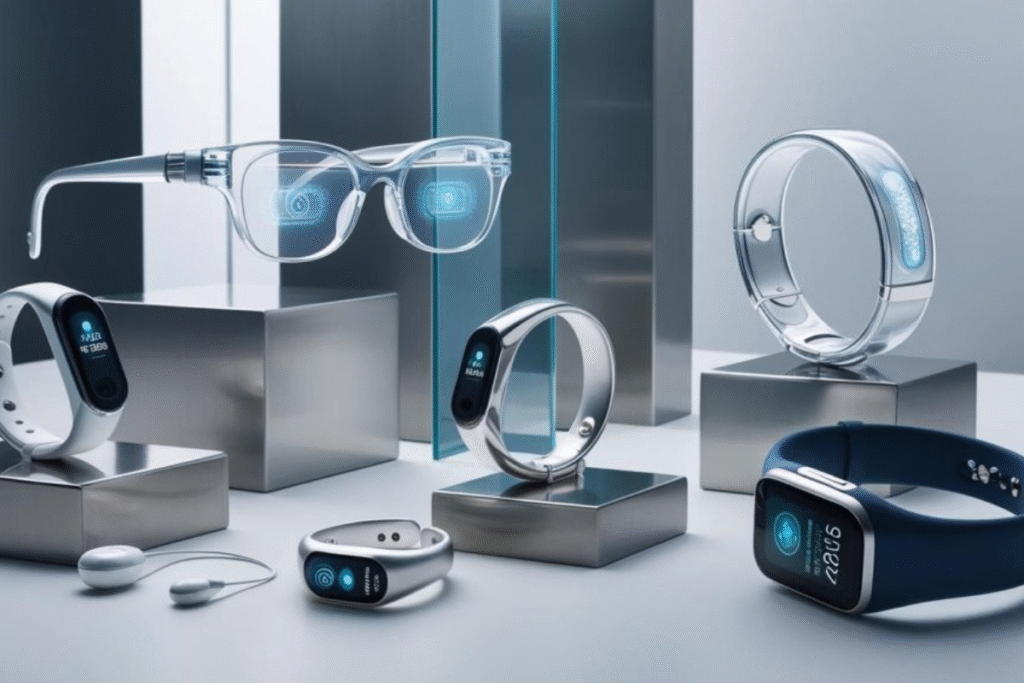Technology is no longer limited to the devices we hold in our hands or keep on our desks. Over the last decade, wearable gadgets have emerged as powerful tools that seamlessly integrate into our daily lives. From smartwatches and fitness trackers to smart glasses and even wearable medical devices, these innovations are shaping the way we live, work, and interact with the world.
What once seemed like futuristic accessories are now becoming essential in our day-to-day routines. But what exactly makes wearable gadgets a necessity rather than a luxury? Let’s explore.
1. The Rise of Wearable Technology
Wearable technology refers to electronic devices designed to be worn on the body. Unlike smartphones or laptops, these gadgets are hands-free and built for constant interaction, making them unique in the tech ecosystem.
The global market for wearables has skyrocketed in recent years, driven by advancements in artificial intelligence (AI), Internet of Things (IoT), and 5G connectivity. According to industry reports, the wearable tech market is expected to exceed $150 billion by 2028, reflecting how rapidly it is moving from “nice-to-have” to “must-have.”
2. Why Wearables Are Becoming Essential
a. Health Monitoring at Your Fingertips
One of the most significant reasons people are adopting wearables is health tracking. Fitness trackers and smartwatches monitor steps, calories, sleep cycles, heart rate, blood oxygen levels, and even stress patterns. Some advanced models can detect irregular heartbeats, potentially saving lives.
For individuals managing chronic conditions like diabetes or hypertension, wearable medical devices provide real-time insights and alerts that help prevent emergencies.
Example: Apple Watch and Fitbit have introduced ECG (electrocardiogram) features that allow early detection of heart-related issues.
b. Boosting Fitness and Lifestyle
Wearables are no longer just about counting steps. They provide tailored fitness recommendations, track progress, and motivate users with gamified experiences. Many apps sync with wearables, creating personalized workout plans.
For example, athletes use wearables to measure VO2 max, body temperature, and hydration levels, helping them achieve peak performance.
c. Productivity and Connectivity on the Go
Modern smartwatches act as mini-smartphones. They enable you to check emails, receive calls, pay bills, and even navigate with GPS—without needing to reach for your phone.
For professionals, this means staying connected during meetings, workouts, or while traveling, thereby increasing productivity.
d. Safety and Emergency Features
Wearables are also becoming essential for safety. Smartwatches now come with fall detection and emergency SOS alerts. If a user experiences a hard fall or medical emergency, the device can automatically notify emergency contacts or services.
For parents, wearables designed for children provide GPS tracking, ensuring peace of mind. Similarly, elderly care devices allow caregivers to monitor health and location in real time.
e. Fashion Meets Functionality
The rise of smart jewelry, smart glasses, and customizable smartwatch straps has blurred the line between tech and fashion. Wearables are not only functional but also a style statement.
Luxury brands like Tag Heuer, Louis Vuitton, and Fossil are merging fashion with technology, making wearables an essential accessory in modern lifestyle.
f. Mental Wellness and Stress Management
Beyond physical health, wearables are supporting mental well-being. Devices measure stress levels by analyzing heart rate variability and skin temperature, offering relaxation techniques like guided breathing exercises.
Some wearables also promote mindfulness by reminding users to take breaks, hydrate, or meditate.
g. Seamless Integration with Smart Ecosystems
Wearable gadgets connect with smart homes, smartphones, and even cars, creating a unified ecosystem. Imagine controlling your thermostat, unlocking doors, or starting your car—all from your wrist.
This level of convenience makes wearables an integral part of a connected lifestyle.
3. Types of Wearable Gadgets You Should Know
1. Smartwatches
-
Track fitness, monitor health, and act as an extension of your smartphone.
-
Popular examples: Apple Watch, Samsung Galaxy Watch, Garmin.
2. Fitness Bands/Trackers
-
Lightweight, affordable, and focused on activity tracking.
-
Popular examples: Fitbit, Xiaomi Mi Band.
3. Smart Glasses
-
Augmented reality (AR) features, hands-free navigation, and smart assistant integration.
-
Popular examples: Google Glass, Ray-Ban Meta Smart Glasses.
4. Smart Clothing
-
Embedded sensors track posture, muscle activity, and performance.
-
Popular examples: Hexoskin, Nadi X yoga pants.
5. Wearable Medical Devices
-
Continuous glucose monitors, heart monitors, and blood pressure sensors.
-
Popular examples: Dexcom G6, Omron HeartGuide.
6. Smart Rings and Jewelry
-
Subtle, fashionable, and capable of tracking sleep, activity, and even payments.
-
Popular examples: Oura Ring, Motiv Ring.
4. The Role of AI and IoT in Wearables
Wearables wouldn’t be as powerful without AI and IoT.
-
AI analyzes health data to provide personalized recommendations.
-
IoT ensures wearables communicate with other smart devices, enabling automation and remote monitoring.
For instance, a smartwatch can detect when you’re waking up and automatically adjust your smart home lights and thermostat for comfort.
5. Wearables in the Workplace
The adoption of wearable gadgets isn’t limited to personal use. Workplaces are embracing them for:
-
Employee wellness programs (tracking fitness goals).
-
Safety wearables for workers in high-risk industries.
-
AR smart glasses for hands-free training and remote collaboration.
This shift shows that wearables are not just consumer gadgets but also professional tools.
6. The Future of Wearable Technology
The future points toward even more advanced innovations:
-
Implantable wearables for continuous health monitoring.
-
Brain-computer interfaces (BCI) allowing control of devices with thoughts.
-
Smart fabrics that generate energy from movement.
-
AI-powered predictive health monitoring to prevent diseases before symptoms appear.
As technology becomes more personalized and proactive, wearables will evolve from being helpful gadgets to lifesaving necessities.
7. Challenges and Concerns
While wearables are becoming necessities, challenges remain:
-
Data privacy concerns – health data is sensitive and must be protected.
-
Battery life limitations – frequent charging is inconvenient.
-
Cost – premium wearables are expensive.
-
Accuracy issues – not all devices deliver 100% reliable results.
Despite these concerns, the benefits of wearables outweigh the drawbacks for most users.
8. Why Wearables Are Here to Stay
Wearable gadgets have transformed from luxury accessories into practical tools that touch nearly every aspect of modern life—health, safety, productivity, fitness, and even fashion.
Their real-time insights, convenience, and ability to integrate seamlessly with our digital lives are what make them indispensable. Just like smartphones became non-negotiable within a decade, wearables are quickly becoming a necessity in the 21st century.
FAQs
Are wearable gadgets safe to use daily?
Yes, most wearables are safe. They use low-level wireless signals like Bluetooth, which are generally considered harmless. However, it’s important to buy from reputable brands that comply with safety standards.
Can wearables really detect health problems?
Advanced wearables can detect signs of irregular heartbeat, sleep apnea, oxygen dips, and more. While they are not a replacement for medical devices, they serve as early warning systems.
Do wearable gadgets work without smartphones?
Many wearables can work independently, but most require syncing with a smartphone for full functionality. Some smartwatches now have built-in SIM or eSIM support for standalone use.
Are wearable gadgets worth the investment?
Yes, especially for health, productivity, and safety. The insights and convenience they provide often outweigh their cost.
What is the future of wearable technology?
The future includes AI-powered health monitoring, smart fabrics, augmented reality glasses, and even implantable devices for advanced healthcare and lifestyle support.

